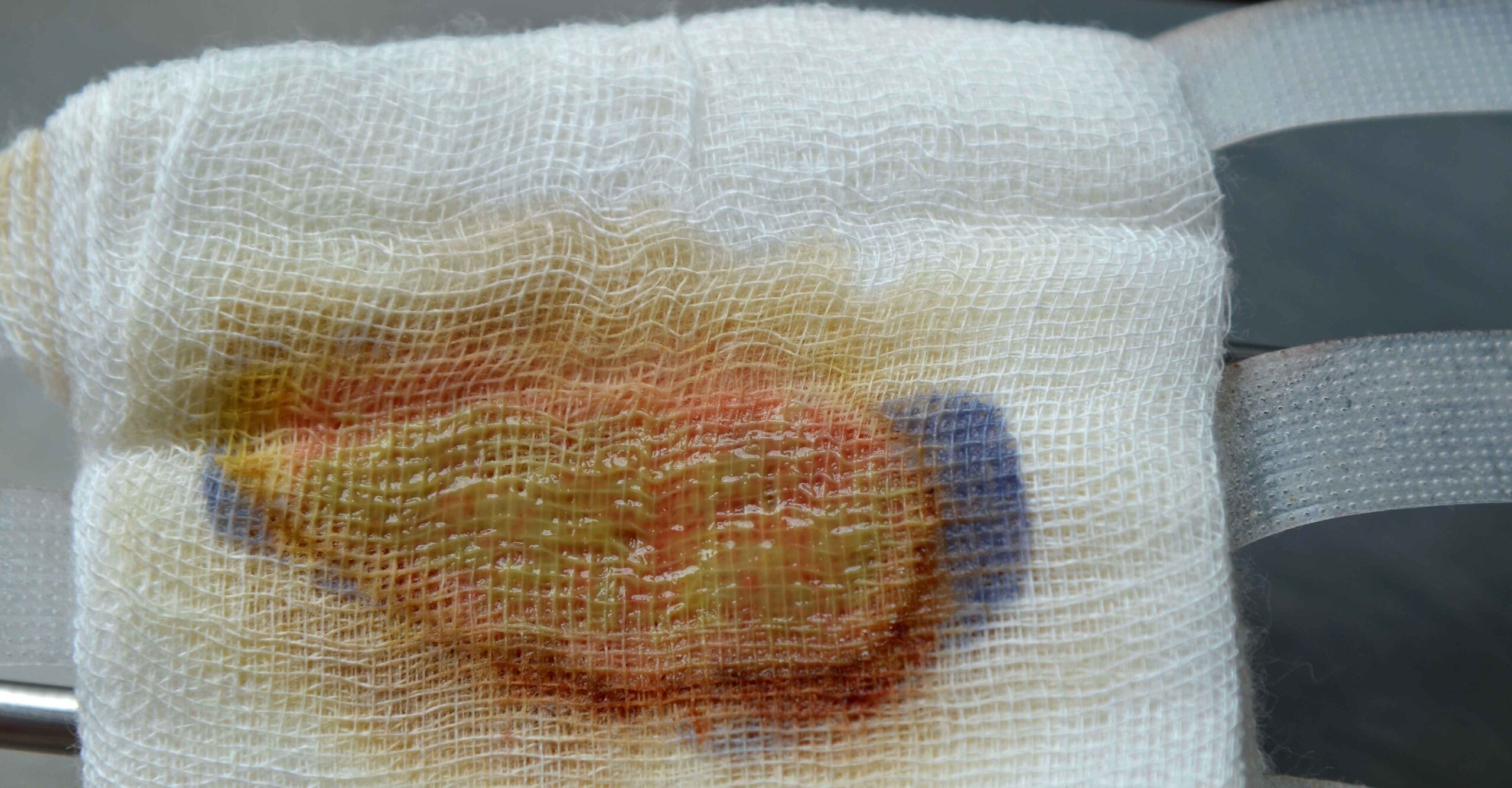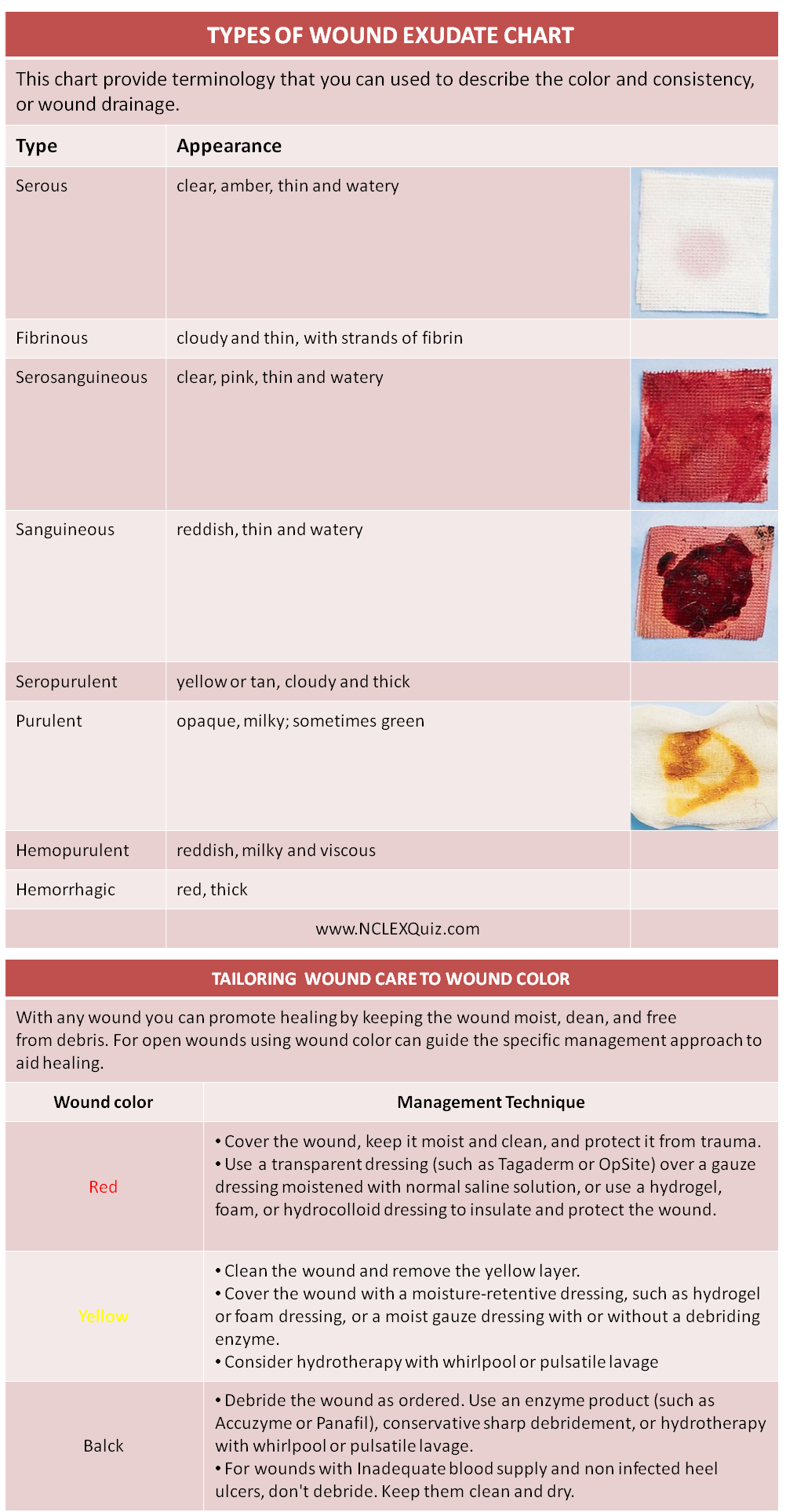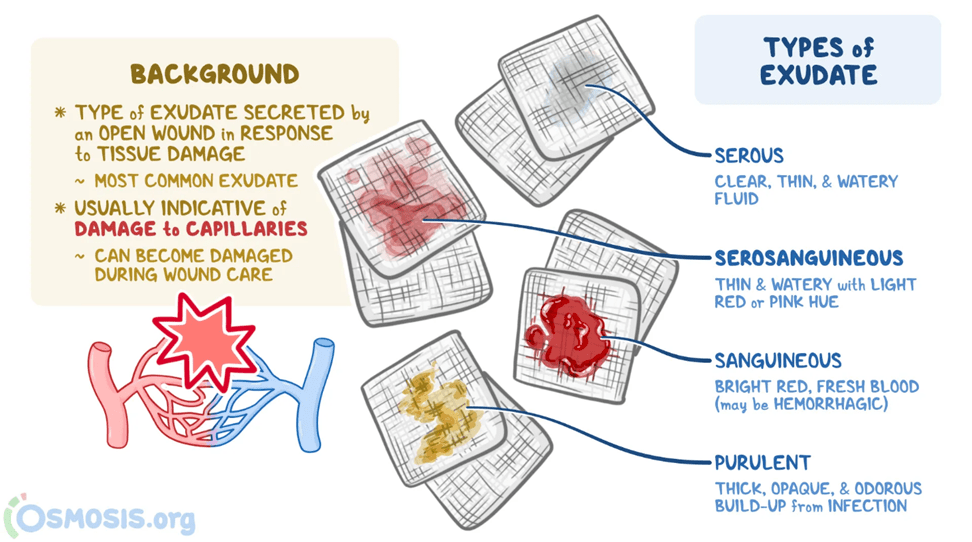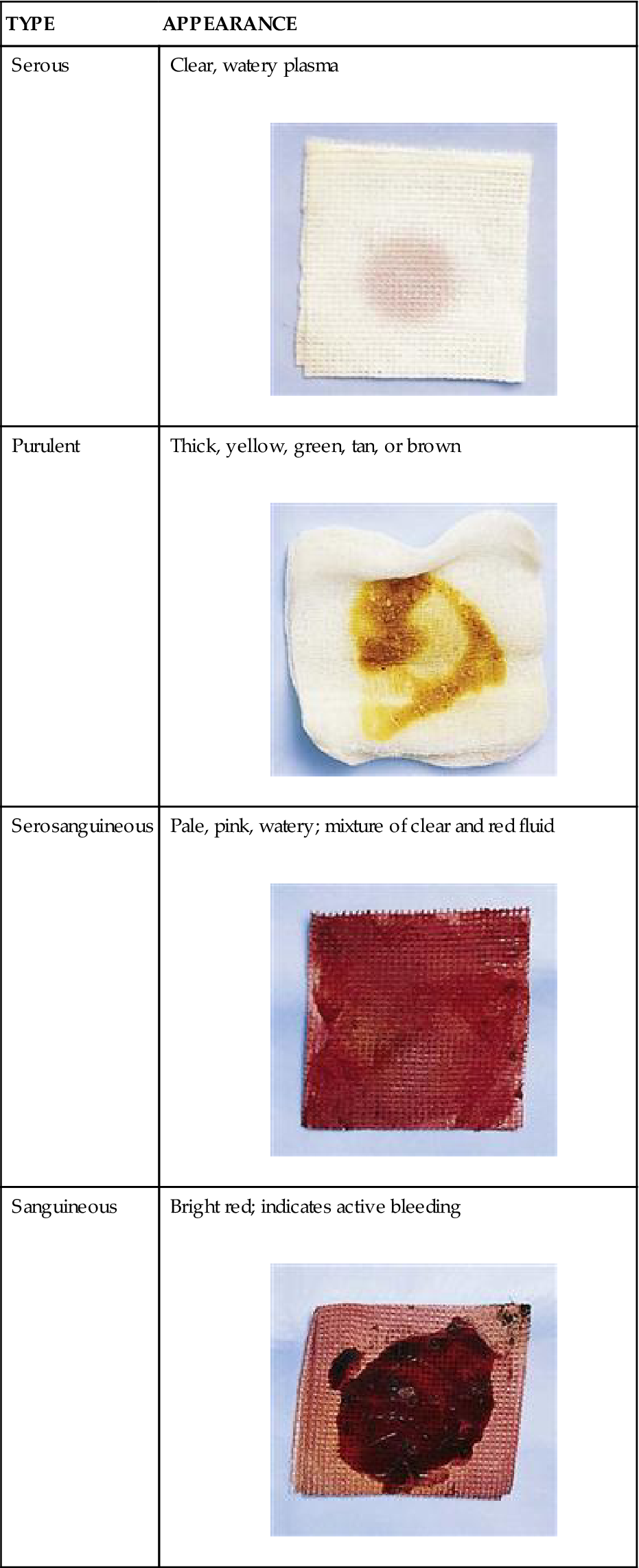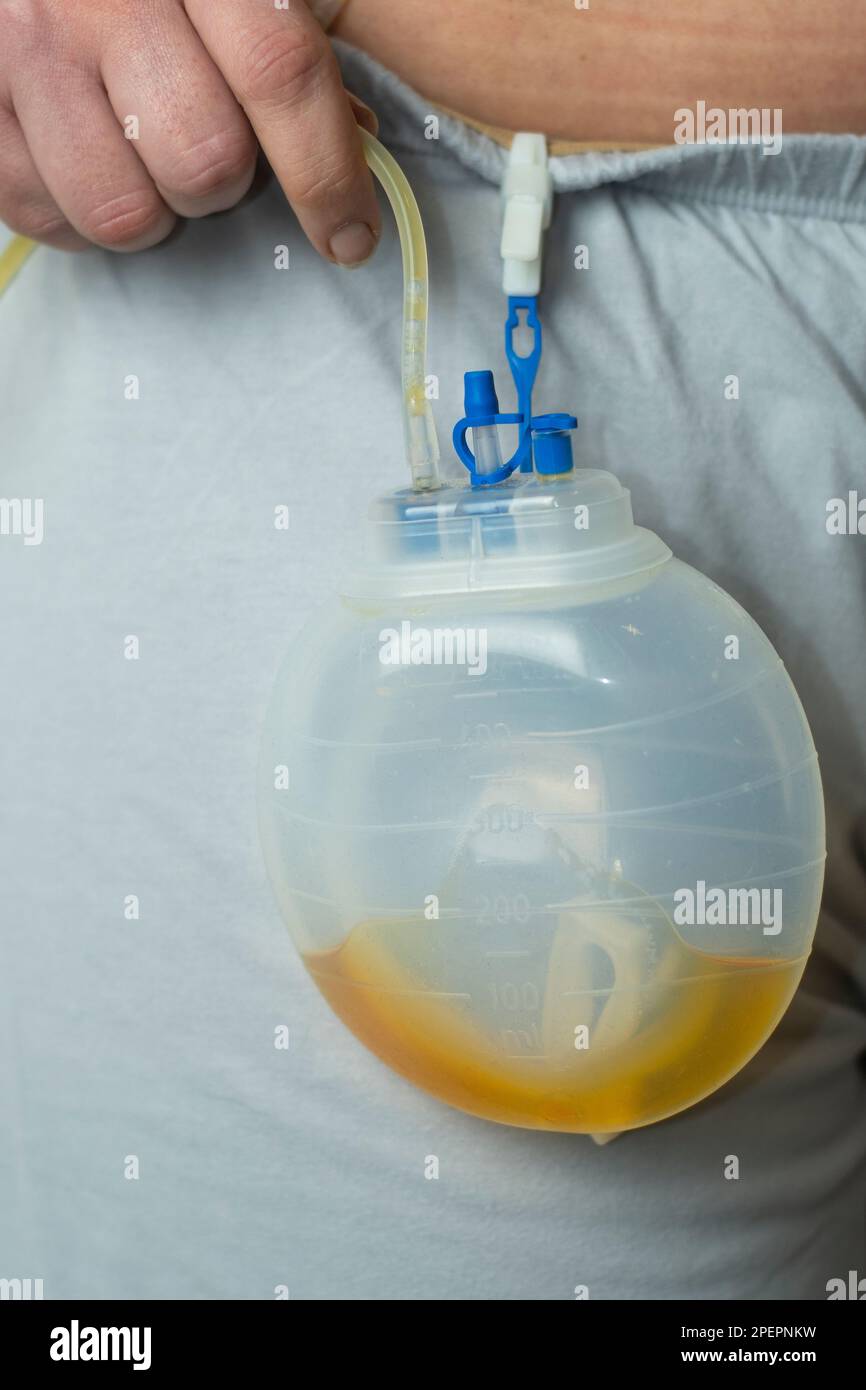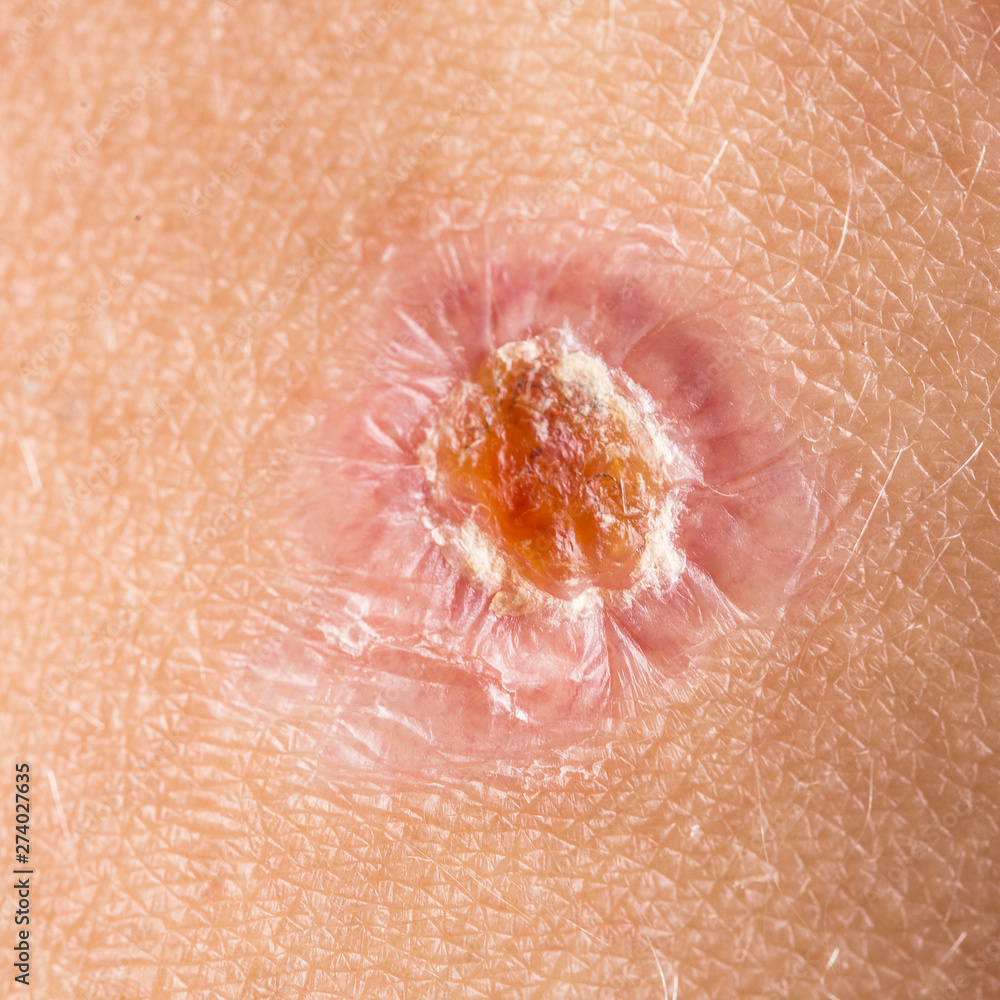Wound Yellow Discharge - Some types of normal wound drainage look like thin clear watery fluid, whereas others may resemble clear blood fluid. It’s slightly thicker than water. 1 seropurulent wound drainage can have a variety of colors,. Wound drainage that turns cloudy, yellow, or tan is called seropurulent and is usually a sign that the wound is becoming colonized and treatment changes are needed. When examining wound drainage, several factors should be considered, including the color, consistency, amount, and odor. This type of wound drainage is a normal part of your body’s healing process. Serous drainage is a clear to yellow fluid that leaks out of a wound. Wound drainage is also called exudate. Purulent discharge, which is a thick, white, yellow, or brown fluid coming from the wound, is a sign of infection and should not be ignored. These factors will guide the nurse in determining whether the wound is progressing as expected or if further.
It’s common for infected wounds to ooze yellowish fluid that. Serous drainage is a clear to yellow fluid that leaks out of a wound. It’s slightly thicker than water. When examining wound drainage, several factors should be considered, including the color, consistency, amount, and odor. Wound drainage is also called exudate. These factors will guide the nurse in determining whether the wound is progressing as expected or if further. Purulent discharge, which is a thick, white, yellow, or brown fluid coming from the wound, is a sign of infection and should not be ignored. Some types of normal wound drainage look like thin clear watery fluid, whereas others may resemble clear blood fluid. Wound drainage that turns cloudy, yellow, or tan is called seropurulent and is usually a sign that the wound is becoming colonized and treatment changes are needed. It’s the fluid that makes your bandage look and feel wet.
When examining wound drainage, several factors should be considered, including the color, consistency, amount, and odor. This type of wound drainage is a normal part of your body’s healing process. These factors will guide the nurse in determining whether the wound is progressing as expected or if further. Some types of normal wound drainage look like thin clear watery fluid, whereas others may resemble clear blood fluid. Purulent discharge, which is a thick, white, yellow, or brown fluid coming from the wound, is a sign of infection and should not be ignored. 1 seropurulent wound drainage can have a variety of colors,. It’s common for infected wounds to ooze yellowish fluid that. Serous drainage is a clear to yellow fluid that leaks out of a wound. Wound drainage is also called exudate. It’s the fluid that makes your bandage look and feel wet.
Types of wound drainage Burns nursing, Wound healing nursing, Nurse
It’s the fluid that makes your bandage look and feel wet. When examining wound drainage, several factors should be considered, including the color, consistency, amount, and odor. Serous drainage is a clear to yellow fluid that leaks out of a wound. These factors will guide the nurse in determining whether the wound is progressing as expected or if further. It’s.
Wound Drainage Assessment
This type of wound drainage is a normal part of your body’s healing process. Wound drainage is also called exudate. It’s slightly thicker than water. Purulent discharge, which is a thick, white, yellow, or brown fluid coming from the wound, is a sign of infection and should not be ignored. When examining wound drainage, several factors should be considered, including.
Types of Wound Exudate Cheat Sheet NCLEX Quiz
This type of wound drainage is a normal part of your body’s healing process. Wound drainage that turns cloudy, yellow, or tan is called seropurulent and is usually a sign that the wound is becoming colonized and treatment changes are needed. Some types of normal wound drainage look like thin clear watery fluid, whereas others may resemble clear blood fluid..
Exudate Definition and Examples Biology Online Dictionary
These factors will guide the nurse in determining whether the wound is progressing as expected or if further. When examining wound drainage, several factors should be considered, including the color, consistency, amount, and odor. 1 seropurulent wound drainage can have a variety of colors,. It’s the fluid that makes your bandage look and feel wet. It’s slightly thicker than water.
WOUND DRAINAGE! 1) Serous Clear, watery plasma 2) Purulent Thick
These factors will guide the nurse in determining whether the wound is progressing as expected or if further. It’s common for infected wounds to ooze yellowish fluid that. When examining wound drainage, several factors should be considered, including the color, consistency, amount, and odor. Wound drainage is also called exudate. Purulent discharge, which is a thick, white, yellow, or brown.
Stages Of Wound Drainage
Serous drainage is a clear to yellow fluid that leaks out of a wound. This type of wound drainage is a normal part of your body’s healing process. Wound drainage that turns cloudy, yellow, or tan is called seropurulent and is usually a sign that the wound is becoming colonized and treatment changes are needed. These factors will guide the.
Skin Integrity and Wound Care Nurse Key
It’s common for infected wounds to ooze yellowish fluid that. 1 seropurulent wound drainage can have a variety of colors,. These factors will guide the nurse in determining whether the wound is progressing as expected or if further. Serous drainage is a clear to yellow fluid that leaks out of a wound. It’s slightly thicker than water.
Types of wound drainage Nursing school survival, Home health nurse
This type of wound drainage is a normal part of your body’s healing process. When examining wound drainage, several factors should be considered, including the color, consistency, amount, and odor. It’s the fluid that makes your bandage look and feel wet. Purulent discharge, which is a thick, white, yellow, or brown fluid coming from the wound, is a sign of.
What Is Yellow Drainage From Wound at Mildred Lesley blog
It’s slightly thicker than water. These factors will guide the nurse in determining whether the wound is progressing as expected or if further. Wound drainage that turns cloudy, yellow, or tan is called seropurulent and is usually a sign that the wound is becoming colonized and treatment changes are needed. This type of wound drainage is a normal part of.
A closeup view of a small skin wound during the healing process, yellow
Some types of normal wound drainage look like thin clear watery fluid, whereas others may resemble clear blood fluid. Wound drainage that turns cloudy, yellow, or tan is called seropurulent and is usually a sign that the wound is becoming colonized and treatment changes are needed. When examining wound drainage, several factors should be considered, including the color, consistency, amount,.
Serous Drainage Is A Clear To Yellow Fluid That Leaks Out Of A Wound.
It’s common for infected wounds to ooze yellowish fluid that. Purulent discharge, which is a thick, white, yellow, or brown fluid coming from the wound, is a sign of infection and should not be ignored. These factors will guide the nurse in determining whether the wound is progressing as expected or if further. Some types of normal wound drainage look like thin clear watery fluid, whereas others may resemble clear blood fluid.
It’s Slightly Thicker Than Water.
It’s the fluid that makes your bandage look and feel wet. Wound drainage is also called exudate. Wound drainage that turns cloudy, yellow, or tan is called seropurulent and is usually a sign that the wound is becoming colonized and treatment changes are needed. When examining wound drainage, several factors should be considered, including the color, consistency, amount, and odor.
1 Seropurulent Wound Drainage Can Have A Variety Of Colors,.
This type of wound drainage is a normal part of your body’s healing process.

